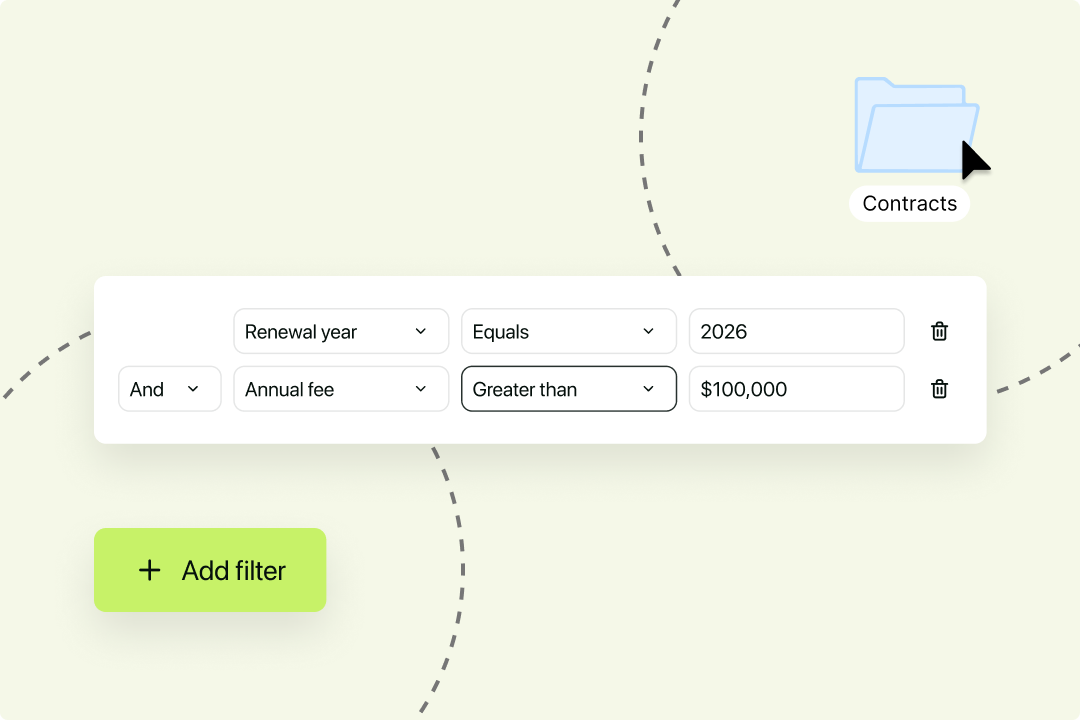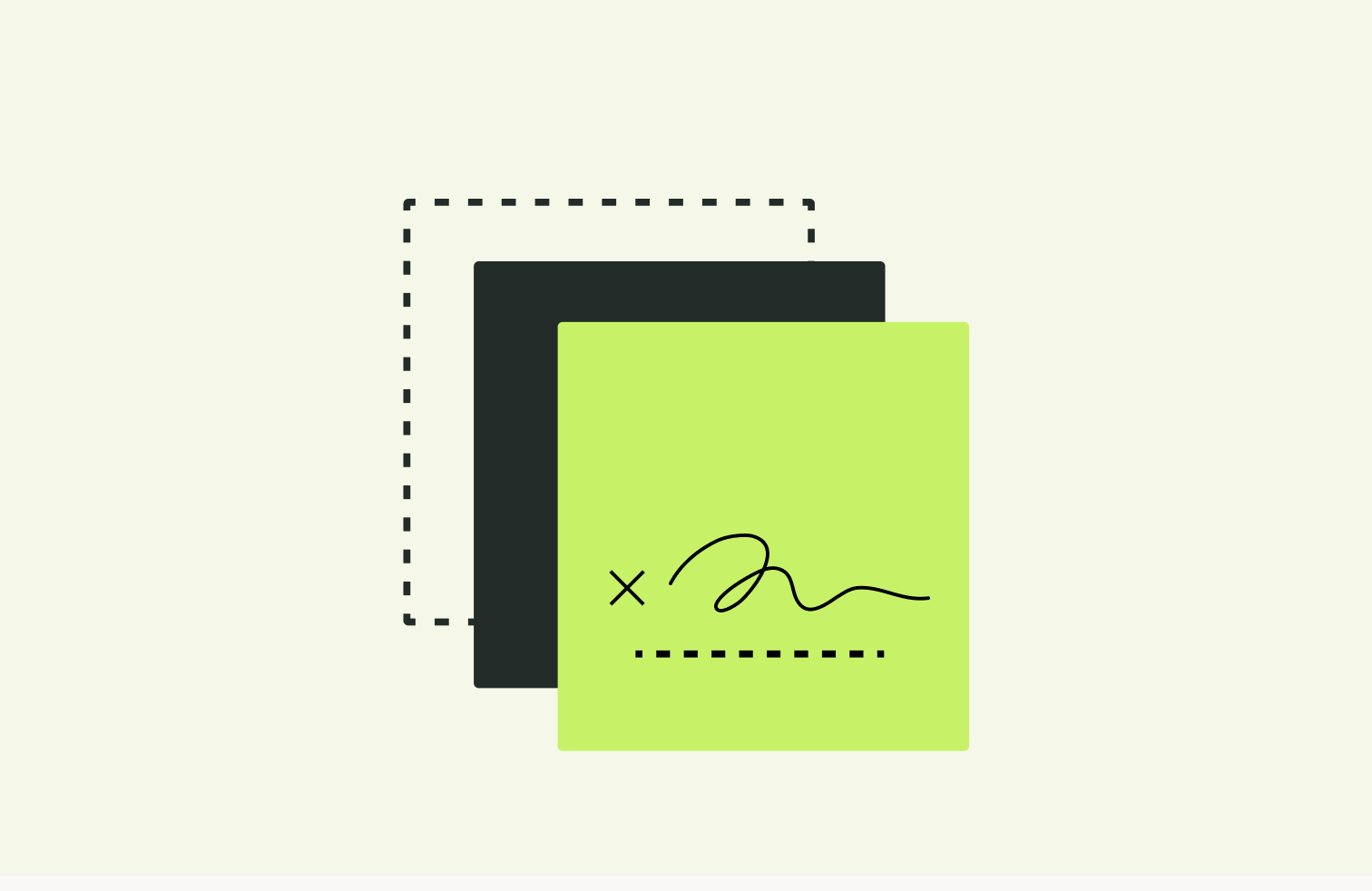Solutions
Customer Support
Resources


Managing contract risk should be a top priority for your organization, not just the in-house legal team or contract manager.
Contract risk management ensures that your contracts provide certainty, hold parties accountable, and offer legal protection to all your agreements, without becoming a risk to the business itself!
However, to effectively manage contract risk, you need to be able to identify it. The most efficient way to do this is through contract lifecycle management (CLM) software, enabling you to optimize your processes.
These tools help to streamline your contract processes and maximize business efficiency by enabling you to create, store, and analyze your contracts in one place. But before we dive into common contract risks and how contract risk management software like Juro can help you manage this, let’s look at what exactly contract risk is.
In the broadest sense, contract risk describes instances where businesses become legally or financially vulnerable due to the contents or handling of a contract.
This definition is extremely broad, as contract risk can manifest itself in a number of different ways. These can be split into four main categories of risk:
While it isn’t possible to eliminate every single risk associated with contracts, contract risk management tools can help you minimize and mitigate many of the associated risks.
There are a huge number of risks that come with contracting, especially when you’re still using manual processes to do so. If you lack the right tools or risk management software to minimize risk, you’ll have to face several challenges that could stand in the way of accelerating growth.
We’ve listed just a few of the most common contract risks below.
Contract visibility describes how effectively you can find, view, track, and extract the most important information from your contracts. This is important as not knowing what your contracts contain or where they are is a significant risk.
Lack of contract visibility can lead to lapsed deadlines, falling behind on contract milestones, failure to meet contractual obligations, or, in the worst case, lawsuits.
This is often a common problem, as businesses have yet to digitize their contracts and store them in a searchable way. Have you ever tried to sort through 1000+ files in a filing cabinet or worse… find a USB converter in 2026?!
By automating this process and storing contracts digitally you can put your contract metadata to work. Depending on what data you capture, contract metadata can be anything from who created the contract to who the named parties are, and when the commencement date is.

This data can uncover important information like deadlines or IP clauses that could expose your organization to unwanted risk. For example, in Juro, you can use these smartfields to activate date reminders. This can be done simply by clicking on the date and from there choosing when you'd like a reminder to be sent.
Contract risk management allows you to identify potential risks in just a few clicks, giving you greater control over your contracts.
Standardizing contracts can help teams scale their legal departments and reduce time to sign.
In-house counsel can create templates for frequently used contracts to ensure that they're all worded consistently and clearly. For example, the below contracts could be standardized:
A platform like Juro enables you to have risk mitigation as part of your contract workflow, especially when it comes to standardizing contracts. Using Juro, you can create automated templates and enable your team to self-serve.
This means that everybody is effectively singing from the same hymn sheet and using the same standard template for ‘simple’ contracts. Without this automation, for example, you might have to send a template by email, conduct specialist training sessions, and dive into the existing templates being used for these contracts across the business. All of this work can be avoided using an automated template process.
Juro embeds contracting in the tools business teams use every day, so they can agree and manage contracts end-to-end - while legal stays in control.

When exploring contract management tools to handle and minimize contract risks efficiently, it's important to opt for software that gives you control over the entire contract workflow, end to end.
A CLM like Juro offers a robust array of features to help legal manage risk and be an enabler, not a blocker to the wider business. We’ve listed just a few key features of risk management software below:
A contract repository is a solution that enables teams to store, track, and manage contracts in one place. This means it can be a single source of truth for contracts and their data, in turn giving the businesses greater visibility into agreements, deadlines, and obligations.
A robust repository ensures key contract owners can respond quickly and confidently to requests, whereas a fragmented approach to contract storage and tracking can slow down the entire contract workflow.

A risk management software like Juro will provide a central storage solution for contracts while also capturing the metadata within your legal agreements in a customizable contract dashboard.
This can then be filtered and queried to quickly surface relevant contracts and highlight important data points. Learn more about our robust repository here.
{{quote1}}
An approval workflow refers to the process of passing a document or decision on various individuals or departments for their approval or rejection.
Usually, this is a defined sequence of tasks that have to happen for the project to progress, with input from the relevant people at every stage.
By creating contract approval workflows in Juro, users can get contracts approved by colleagues and stakeholders before sending them off for eSignature.Gone are the days when contract approval processes meant losing control of versions, passing agreements across desks, and sending emails back and forth.
Learn more about how you can create contract approval workflows in Juro.

Juggling Word, email, Google Docs and PDFs just to review a contract could leave you far more open to risk than an automated approach. Teams can now use contract management software like Juro to mark up contracts and collaborate in Juro's browser-native editor.
This means that legal and business teams can automate routine contract workflow in one unified workspace, with a seamless review process that enables real-time collaboration.
Unlike legacy contract management platforms designed to handle offline files, Juro’s dynamic repository is built on a flexible data layer, allowing users to query contract data at any time, removing information silos across teams.

Contract risk management software makes mitigating contract risk simple. It does this by improving the processes used to manage contracts in the first place.
Juro’s contract automation software is a great example of this. Juro’s all-in-one tool enables users to:
Want to find out more? Fill out the form below to hear more about how Juro can help to reduce contract risk for your business.
.avif)
The Juro knowledge team is an interdisciplinary group of Juro's brightest minds. Our knowledge team incorporates different perspectives from a range of knowledgeable stakeholders at Juro, including our legal engineers, customers success specialists, legal team, executive team and founders. This breadth and depth of knowledge means we can deliver high-quality, well-researched, and informed content, leaning on our internal subject matter experts and their unique experience in the process.
Juro's knowledge team is led by Tom Bangay, Sofia Tyson, and Katherine Bryant, but regularly features other contributors from across the business.

Juro embeds contracting in the tools business teams use every day, so they can agree and manage contracts end-to-end - while legal stays in control.
Book your demo